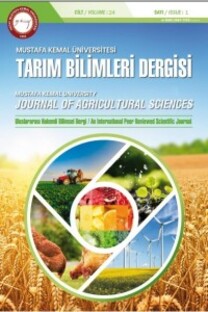Monitoring soil electrical conductivity as an agricultural management tool in drip-irrigated citrus field via EM38
Aims: Soil salinity continues to be one of the vital environmental problems affecting both crop yields and soil quality. Therefore, monitoring spatial and temporal soil salinity at the field level is highly crucial. Electromagnetic induction (EM) technique is a widely used tool for mapping of measuring the apparent bulk salinity (ECa) of a soil-water continuum. Therefore, the objective of this study was to investigate the spatiotemporal variability of soil salinity in a drip irrigated citrus field located in Adana, Turkey. Methods and Results: To monitor soil salinity electromagnetic induction device, EM38 was used. Both horizontal (EMh) and the vertical (EMv) dipole orientations of EM38 was utilized to assess the salinity. In order to convert ECa lectures to the standard soil salinity levels of ECe, calibration equations in turn for ECah and ECav were developed for the site by following conventional soil sampling and salinity measurement. The calibration models were satisfactory with the correlations over 0.70. EM38 lectures were done each month, from April to September. After converting ECah and ECav readings by EM38 to the standard soil salinity values of ECev and ECeh, respectively, interpretation of the standard soil salinity data reflected that average salinity increased about 19 and 21% in the soil profile with the depth of 1 and 2 m soil, respectively, in an irrigation season. Conclusions: The salinity was significantly increased at the end of irrigation season. Additionally, a concrete-lined irrigation channel located the very close to the field caused an increase in soil salinity and farther from channel the soil salinity values were decreasing. Thus, the irrigation water penetration could be occurred from channel to the field. Significance and Impact of the Study: Consequently, the monitoring approach is able to be adapted successfully in practice so that the soil salinity could be quantified easily and rapidly.
